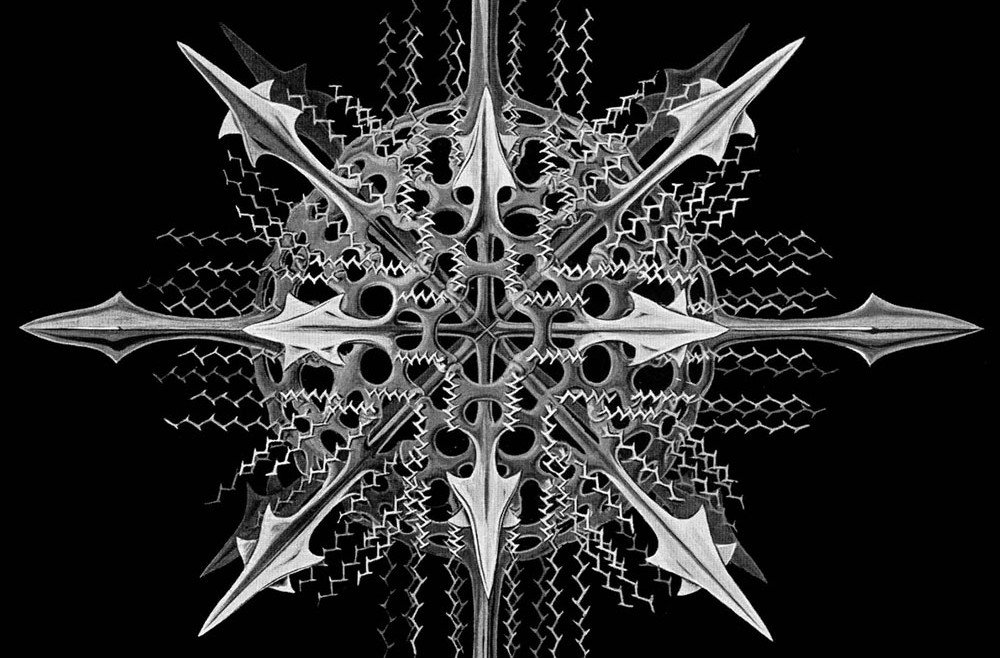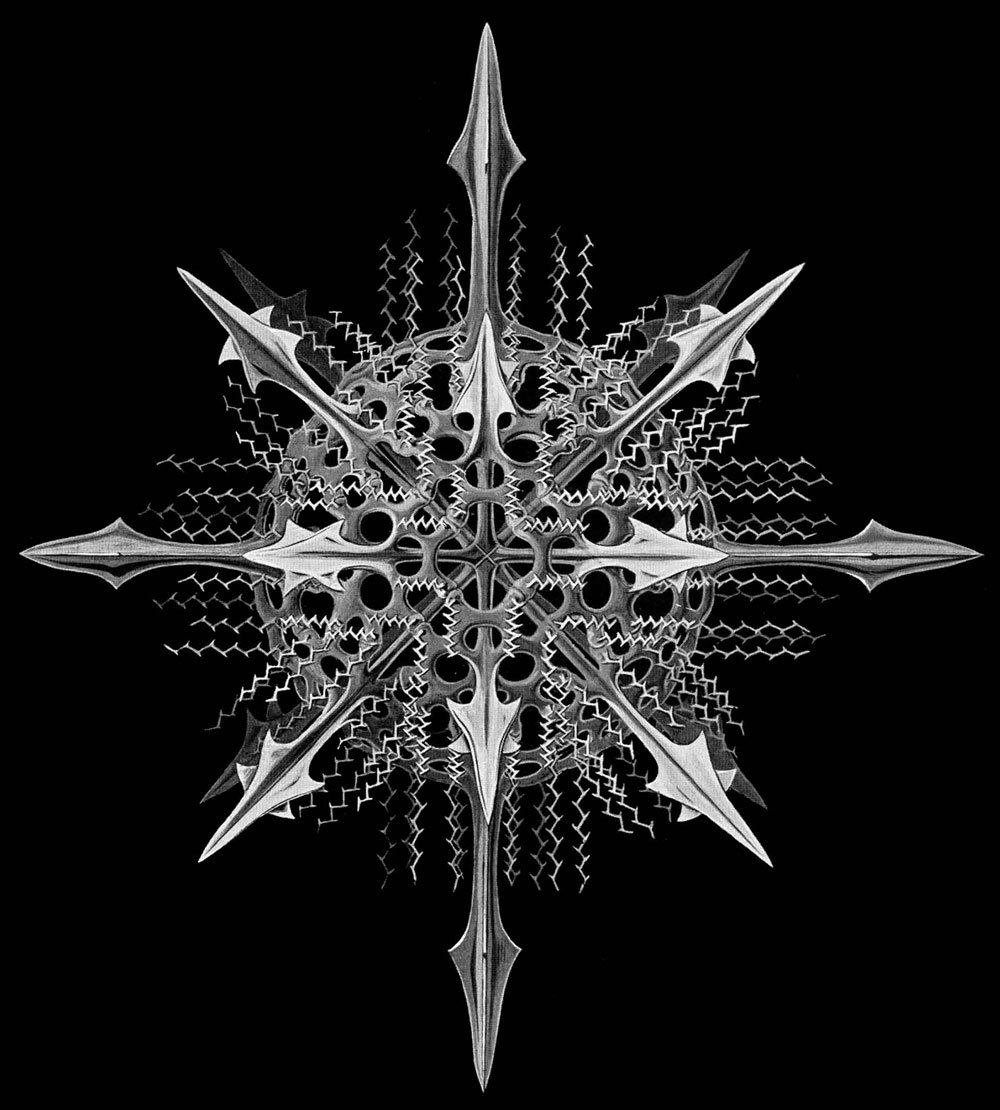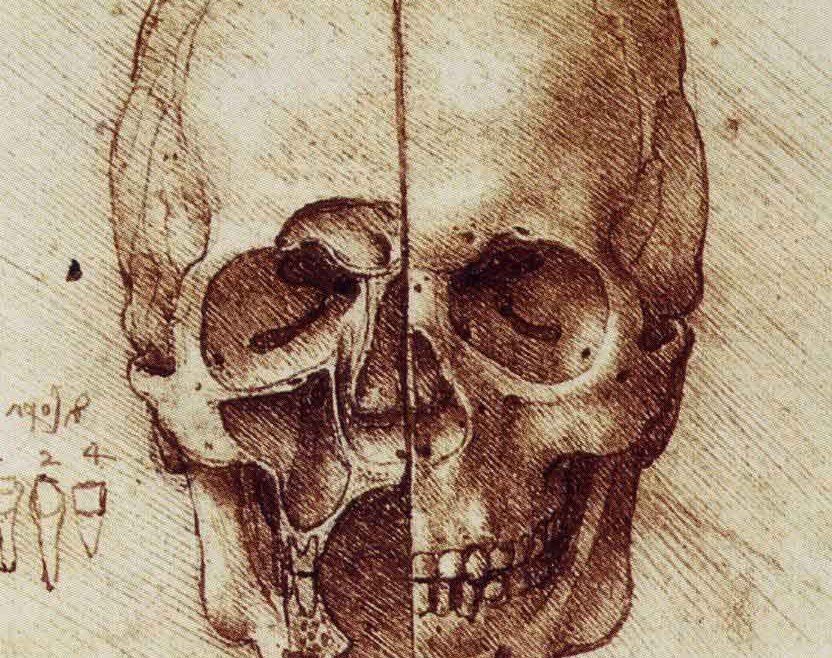Soviet Propaganda and Anti-Religious Campaigns
https://linesandmarks.com/wp-content/uploads/viktor-deni-1st-mai-poster-1929.jpg 700 940 Lines & Marks Lines & Marks https://linesandmarks.com/wp-content/uploads/viktor-deni-1st-mai-poster-1929.jpgTo win in the civil war, the sprouting Soviet power had to ensure it was supported by the workers and the peasants. How could they show the illiterate population that the Bolsheviks were on their side? With a bright poster and a catchy slogan…Soviet propaganda found the soft spots of the powerless poor people, and the outstanding artists of the Russian avant garde helped attack them.” – From Bird in Flight, “The Early Days of Soviet Propaganda.”
[foogallery id=”8613″]
The Soviet Union was the first state to have as an ideological objective the elimination of religion. Toward that end, the Communist regime confiscated church property, ridiculed religion, harassed believers, and propagated atheism in the schools. Actions toward particular religions, however, were determined by State interests, and most organized religions were never outlawed.
The main target of the anti-religious campaign in the 1920s and 1930s was the Russian Orthodox Church, which had the largest number of faithful. Nearly all of its clergy, and many of its believers, were shot or sent to labor camps. Theological schools were closed, and church publications were prohibited. By 1939 only about 500 of over 50,000 churches remained open.” – From the Library of Congress, Revelations from the Russian Archives, Anti-religious Campaigns.
[foogallery id=”8615″]
[foogallery id=”8621″]
post-ussr kid
no-roots tree.

![Njideka Akunyili Crosby, "Nwantinti," 2012.
Acrylic, charcoal, pencil color, collage and transfers on paper.
5.57 ft. x 8 ft. [Photograph by Marc Bernier. Image Courtesy of the artist and Victoria Miro, London]](https://linesandmarks.com/wp-content/uploads/njideka-akunyili-crosby_nwantinti-2012-1170x658.jpg)
 Njideka Akunyili Crosby was born in 1983 in Enugu, Nigeria and currently lives and works in Los Angeles. Informed by art historical and literary sources, Njideka Akunyili Crosbys complex, multi-layered works reflect contemporary transcultural identity. Combining drawing, painting and collage on paper, Akunyili Crosbys large-scale figurative compositions are drawn from the artist’s memories and experiences. She uses the visual language and inherited traditions of classical academic western painting, particularly the portrait and still life. Akunyili Crosby’s characters and scenes, however, occupy the liminal, in-between zone that post-colonial theorist Homi K. Bhabha refers to as ‘the third space’, a point of overlap, conflation and mixing of cultural influences specific to diaspora communities. She is the 2015 recipient of the Joyce Alexander Wein Artist Prize from the Studio Museum in Harlem. She received her MFA from Yale University of Art and her BA from the Studio Museum in Harlem. She received her MFA from Yale University of Art and her BA (Honors) from Swarthmore College.
Njideka Akunyili Crosby was born in 1983 in Enugu, Nigeria and currently lives and works in Los Angeles. Informed by art historical and literary sources, Njideka Akunyili Crosbys complex, multi-layered works reflect contemporary transcultural identity. Combining drawing, painting and collage on paper, Akunyili Crosbys large-scale figurative compositions are drawn from the artist’s memories and experiences. She uses the visual language and inherited traditions of classical academic western painting, particularly the portrait and still life. Akunyili Crosby’s characters and scenes, however, occupy the liminal, in-between zone that post-colonial theorist Homi K. Bhabha refers to as ‘the third space’, a point of overlap, conflation and mixing of cultural influences specific to diaspora communities. She is the 2015 recipient of the Joyce Alexander Wein Artist Prize from the Studio Museum in Harlem. She received her MFA from Yale University of Art and her BA from the Studio Museum in Harlem. She received her MFA from Yale University of Art and her BA (Honors) from Swarthmore College. Born in Nigeria in 1982, ruby amanze onyinyechi lives and works in New York. ruby onyinyechi amanze is a visual artist whose practice is primarily centered around drawing and works on paper. Her large scale drawings are part of an ongoing, non-linear narrative called aliens, hybrids and ghosts and explore space, play, and cultural hybridity. Existing somewhere between constructed reality, fantasy, memory and imagination, these pencil-and-ink drawings on paper embellished with glitter and fluorescent pen invent a space where ethnic and cultural borders seemed to be abolished. "This isn"t social science, it"s magic-realism and the power of drawing to invent worlds for ourselves. I"m a story-teller, not an advocate," she says. amanze immediately relocated to the U.K, prior to moving to the U.S. In 2012-2013, she was the recipient of a Fulbright Scholars Award in Drawing to the University of Nigeria, Nsukka. She currently resides in New York where she is an Artist-in-Residence at the Queens Museum and in The Drawing Center’s Open Sessions Program.
Born in Nigeria in 1982, ruby amanze onyinyechi lives and works in New York. ruby onyinyechi amanze is a visual artist whose practice is primarily centered around drawing and works on paper. Her large scale drawings are part of an ongoing, non-linear narrative called aliens, hybrids and ghosts and explore space, play, and cultural hybridity. Existing somewhere between constructed reality, fantasy, memory and imagination, these pencil-and-ink drawings on paper embellished with glitter and fluorescent pen invent a space where ethnic and cultural borders seemed to be abolished. "This isn"t social science, it"s magic-realism and the power of drawing to invent worlds for ourselves. I"m a story-teller, not an advocate," she says. amanze immediately relocated to the U.K, prior to moving to the U.S. In 2012-2013, she was the recipient of a Fulbright Scholars Award in Drawing to the University of Nigeria, Nsukka. She currently resides in New York where she is an Artist-in-Residence at the Queens Museum and in The Drawing Center’s Open Sessions Program. Born in 1984 in the United States Bethany Collins works in New York, Atlanta and Chicago. Bethany Collins is a multidisciplinary artist who takes the material of the classroom––paper, Pink Pearl erasers, graphite, old dictionaries and, more broadly, language itself––to create spare, poetically charged works on paper, objects and wall-based installations. Her work is fueled by a critical exploration of how race and language interact. Collins transfers and obscures dictionary definitions, government reports and historical publications to create restrained statements that ring with emotive power. She is exhibited at the Birmingham Museum of Art this year. She is represented by Richard Gray Gallery, New York
Born in 1984 in the United States Bethany Collins works in New York, Atlanta and Chicago. Bethany Collins is a multidisciplinary artist who takes the material of the classroom––paper, Pink Pearl erasers, graphite, old dictionaries and, more broadly, language itself––to create spare, poetically charged works on paper, objects and wall-based installations. Her work is fueled by a critical exploration of how race and language interact. Collins transfers and obscures dictionary definitions, government reports and historical publications to create restrained statements that ring with emotive power. She is exhibited at the Birmingham Museum of Art this year. She is represented by Richard Gray Gallery, New York Born in 1968 David Shrigley lives and works in Brighton, United Kingdom. David Shrigley is best known for his distinctive drawing style and works that make satirical comments on everyday situations and human interactions. His quick-witted drawings and hand-rendered texts are typically deadpan in their humour and reveal chance utterings like snippets of over-heard conversations. Reoccurring themes and thoughts pervade his story telling capturing child-like views of the world, the perspective of aliens and monsters or the compulsive habits of an eavesdropper shouting out loud. In 2013, Shrigley was shortlisted for the Turner Prize. Among his recent solo shows: Lose Your Mind, British Council in Guadalajara, Mexico (2016), Drawings and Paintings, Stephen Friedman, London (2016) and soon, Rose Art Museum, Massachussets.
Born in 1968 David Shrigley lives and works in Brighton, United Kingdom. David Shrigley is best known for his distinctive drawing style and works that make satirical comments on everyday situations and human interactions. His quick-witted drawings and hand-rendered texts are typically deadpan in their humour and reveal chance utterings like snippets of over-heard conversations. Reoccurring themes and thoughts pervade his story telling capturing child-like views of the world, the perspective of aliens and monsters or the compulsive habits of an eavesdropper shouting out loud. In 2013, Shrigley was shortlisted for the Turner Prize. Among his recent solo shows: Lose Your Mind, British Council in Guadalajara, Mexico (2016), Drawings and Paintings, Stephen Friedman, London (2016) and soon, Rose Art Museum, Massachussets. Born in 1975 in Cambridge, United Kingdom Lucy Skaer lives and works in Glasgow. Throughout her practice, in sculpture, print, drawing, and film, Lucy Skaer mines the conceptual possibilities of each in order to examine the shifts between dimensions, to explore the gap between object and image, and to represent the gradations between these mediums. The artist includes in her artworks an intimate language made of geometric and fundamental figures. Beyond a visible diversity, these pieces of art explore the mechanisms from where we give a meaning to the objects we believe we know: blew up press images reproducing well-known paintings, reworked old movies extracts through abstraction; rebuilt disseminated fragments... These large scales works on paper often participate in her installation’s scenography. In 2009, Skaer was shortlisted for the Turner Prize, and in 2007, she represented Scotland at the 52nd Venice Biennale. She is represented by Murray Guy Gallery (New York)
Born in 1975 in Cambridge, United Kingdom Lucy Skaer lives and works in Glasgow. Throughout her practice, in sculpture, print, drawing, and film, Lucy Skaer mines the conceptual possibilities of each in order to examine the shifts between dimensions, to explore the gap between object and image, and to represent the gradations between these mediums. The artist includes in her artworks an intimate language made of geometric and fundamental figures. Beyond a visible diversity, these pieces of art explore the mechanisms from where we give a meaning to the objects we believe we know: blew up press images reproducing well-known paintings, reworked old movies extracts through abstraction; rebuilt disseminated fragments... These large scales works on paper often participate in her installation’s scenography. In 2009, Skaer was shortlisted for the Turner Prize, and in 2007, she represented Scotland at the 52nd Venice Biennale. She is represented by Murray Guy Gallery (New York) Ian Alteveer is Associate Curator in the Met’s Department of Modern and Contemporary Art (The Metropolitan Museum of Art), where he organized the past three Roof Garden Commissions. Also at the Met he installed William Kentridge: The Refusal of Time (2013–14) and Regarding Warhol: Sixty Artists, Fifty Years (2012). He worked on the Met’s presentations of Ellsworth Kelly (2012), Richard Serra (2011), John Baldessari (2010), Francis Bacon (2009), and Jasper Johns (2008) and is currently co-organizing a Kerry James Marshall retrospective. Prior to joining the Met, Ian was graduate curatorial fellow and curatorial assistant at New York University’s Grey Art Gallery.
Ian Alteveer is Associate Curator in the Met’s Department of Modern and Contemporary Art (The Metropolitan Museum of Art), where he organized the past three Roof Garden Commissions. Also at the Met he installed William Kentridge: The Refusal of Time (2013–14) and Regarding Warhol: Sixty Artists, Fifty Years (2012). He worked on the Met’s presentations of Ellsworth Kelly (2012), Richard Serra (2011), John Baldessari (2010), Francis Bacon (2009), and Jasper Johns (2008) and is currently co-organizing a Kerry James Marshall retrospective. Prior to joining the Met, Ian was graduate curatorial fellow and curatorial assistant at New York University’s Grey Art Gallery. Bice Curiger is an Art Historian and Artistic Director of the Fondation Vincent van Gogh Arles. She is also editor and co-founder of Parkett, published in Zurich and New York, and has been a curator at Kunsthaus Zurich for twenty years. In 2011 she was the director of the 53rd Venice Biennale. She is the author of many books, catalogues, and articles on Meret Oppenheim, Sigmar Polke, Katharina Fritsch, Maurizio Cattelan, Rebecca Warren, among others.
Bice Curiger is an Art Historian and Artistic Director of the Fondation Vincent van Gogh Arles. She is also editor and co-founder of Parkett, published in Zurich and New York, and has been a curator at Kunsthaus Zurich for twenty years. In 2011 she was the director of the 53rd Venice Biennale. She is the author of many books, catalogues, and articles on Meret Oppenheim, Sigmar Polke, Katharina Fritsch, Maurizio Cattelan, Rebecca Warren, among others.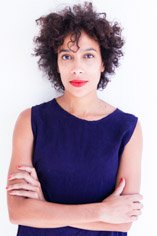 Amanda Hunt is Assistant Curator at The Studio Museum in Harlem where she manages the 2015-16 Artist in Residence program, and has curated many artists shows. Hunt curated Portland2014 - A Biennial of Contemporary Art in Portland, Oregon, and was a curator at LA-ART from 2011-2014. Hunt has worked at various galleries and institutions including Whitechapel Gallery, London, Friedrich Petzel Gallery, New York, the Wattis Institute for Contemporary Arts, San Francisco, and the Philadelphia Museum of Art. Hunt helped to produce two major initiatives in Los Angeles, including the Pacific Standard Time Performance and Public Art Festival, and Made in LA 2012.
Amanda Hunt is Assistant Curator at The Studio Museum in Harlem where she manages the 2015-16 Artist in Residence program, and has curated many artists shows. Hunt curated Portland2014 - A Biennial of Contemporary Art in Portland, Oregon, and was a curator at LA-ART from 2011-2014. Hunt has worked at various galleries and institutions including Whitechapel Gallery, London, Friedrich Petzel Gallery, New York, the Wattis Institute for Contemporary Arts, San Francisco, and the Philadelphia Museum of Art. Hunt helped to produce two major initiatives in Los Angeles, including the Pacific Standard Time Performance and Public Art Festival, and Made in LA 2012.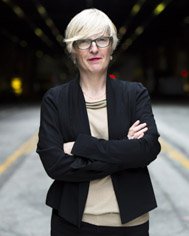 Helen Molesworth is the Chief Curator at MOCA (The Museum of Contemporary Art), Los Angeles. From 2010-2014 she was the Barbara Lee Chief Curator at the Institute of Contemporary Art (ICA) Boston, where she assembled exhibitions of artists Steve Locke, Catherine Opie, Josiah McElheny, and Amy Sillman. She was also the head of the Department of Modern and Contemporary Art at the Harvard Art Museum. From 2002 to 2007, she was the Chief Curator of Exhibitions at the Wexner Center for the Arts, and Curator of Contemporary Art at The Baltimore Museum of Art from 2000-2002. She is the author of numerous catalogue essays.
Helen Molesworth is the Chief Curator at MOCA (The Museum of Contemporary Art), Los Angeles. From 2010-2014 she was the Barbara Lee Chief Curator at the Institute of Contemporary Art (ICA) Boston, where she assembled exhibitions of artists Steve Locke, Catherine Opie, Josiah McElheny, and Amy Sillman. She was also the head of the Department of Modern and Contemporary Art at the Harvard Art Museum. From 2002 to 2007, she was the Chief Curator of Exhibitions at the Wexner Center for the Arts, and Curator of Contemporary Art at The Baltimore Museum of Art from 2000-2002. She is the author of numerous catalogue essays. Frédéric Paul is an art critic and an art historian. He managed the FRAC du Limousin from 1988 to 2000 and the Domaine de Kerguéhennec from 2000 to 2010. He has been Curator at MNAM/ Centre Georges Pompidou since 2015. He has organized hundreds of exhibitions, with the collaboration of many artists, such as Douglas Huebler, Allen Ruppersberg, William Wegman, Jonathan Monk, Claude Closky, Giuseppe Gabellone, and Beatriz Milhazes. He recently published the following Guy de Cointet (Flammarion, 2013), Giuseppe Penone, archéologie (Actes Sud, 2014), Sarah Morris, CAPITAL letters read better for Initials (August Vergag, 2015).
Frédéric Paul is an art critic and an art historian. He managed the FRAC du Limousin from 1988 to 2000 and the Domaine de Kerguéhennec from 2000 to 2010. He has been Curator at MNAM/ Centre Georges Pompidou since 2015. He has organized hundreds of exhibitions, with the collaboration of many artists, such as Douglas Huebler, Allen Ruppersberg, William Wegman, Jonathan Monk, Claude Closky, Giuseppe Gabellone, and Beatriz Milhazes. He recently published the following Guy de Cointet (Flammarion, 2013), Giuseppe Penone, archéologie (Actes Sud, 2014), Sarah Morris, CAPITAL letters read better for Initials (August Vergag, 2015).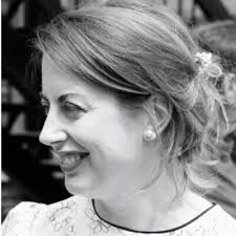 Katharine Stout has been Head of Programme at the ICA (Institute of Contemporary Arts) since 2013. She was Curator of Contemporary Art at Tate Britain from 1999 to 2013. In 2001, she co- founded the Drawing Room, the major European non-profit organization for contemporary drawing. She also was the contemporary art consultant at the National Maritime Museum, Greenwich where she inaugurated the contemporary art program. She has written numerous texts on contemporary British and international art. Her book, Contemporary Drawing: 1960s to Now was published by Tate in Autumn 2014.
Katharine Stout has been Head of Programme at the ICA (Institute of Contemporary Arts) since 2013. She was Curator of Contemporary Art at Tate Britain from 1999 to 2013. In 2001, she co- founded the Drawing Room, the major European non-profit organization for contemporary drawing. She also was the contemporary art consultant at the National Maritime Museum, Greenwich where she inaugurated the contemporary art program. She has written numerous texts on contemporary British and international art. Her book, Contemporary Drawing: 1960s to Now was published by Tate in Autumn 2014. Michaël Woolworth is a publisher and an American Art Printer. He founded his company in Paris in 1985, focused on the realization of original and limited editions with contemporary artists such as Steve Locke, Catherine Opie, Josiah McElheny, and Amy Sillman. His space, located on Place de la Bastille, is a printing house, a gallery (exhibitions on contemporary artworks), as well as a venue for meetings, lectures, projections, and concerts.
Michaël Woolworth is a publisher and an American Art Printer. He founded his company in Paris in 1985, focused on the realization of original and limited editions with contemporary artists such as Steve Locke, Catherine Opie, Josiah McElheny, and Amy Sillman. His space, located on Place de la Bastille, is a printing house, a gallery (exhibitions on contemporary artworks), as well as a venue for meetings, lectures, projections, and concerts. Brett Littman has been the Executive Director of The Drawing Center since 2007. Previously he was the Deputy Director of MOMA PS1, Co-Director of Dieu Donné, and Associate Director of UrbanGlass. He has contributed news and commentary to a wide range of international publications and critical essays to many exhibition catalogues. As a curator, Littman has organized exhibitions for The Drawing Center and other non-profits and galleries worldwide.
Brett Littman has been the Executive Director of The Drawing Center since 2007. Previously he was the Deputy Director of MOMA PS1, Co-Director of Dieu Donné, and Associate Director of UrbanGlass. He has contributed news and commentary to a wide range of international publications and critical essays to many exhibition catalogues. As a curator, Littman has organized exhibitions for The Drawing Center and other non-profits and galleries worldwide. President of the Jury. Tunga is one of the leading Brazilian artists of his generation. He expresses himself through sculpture, installation, performance, and drawing. The mineral world as well as body affects are his work’s great influences. Tunga is based in Rio de Janeiro and his work can be seen in permanent collections of major museums and institutions throughout the world. In 2014, he presented the series of sculptures and drawings entitled From La Voie Humide, exhibited in galleries from New York, Sao Paulo, London, Torino, and recently at Domaine de Chaumont-sur-Loire, for the 2015 Festival of Arts & Nature.
President of the Jury. Tunga is one of the leading Brazilian artists of his generation. He expresses himself through sculpture, installation, performance, and drawing. The mineral world as well as body affects are his work’s great influences. Tunga is based in Rio de Janeiro and his work can be seen in permanent collections of major museums and institutions throughout the world. In 2014, he presented the series of sculptures and drawings entitled From La Voie Humide, exhibited in galleries from New York, Sao Paulo, London, Torino, and recently at Domaine de Chaumont-sur-Loire, for the 2015 Festival of Arts & Nature.
